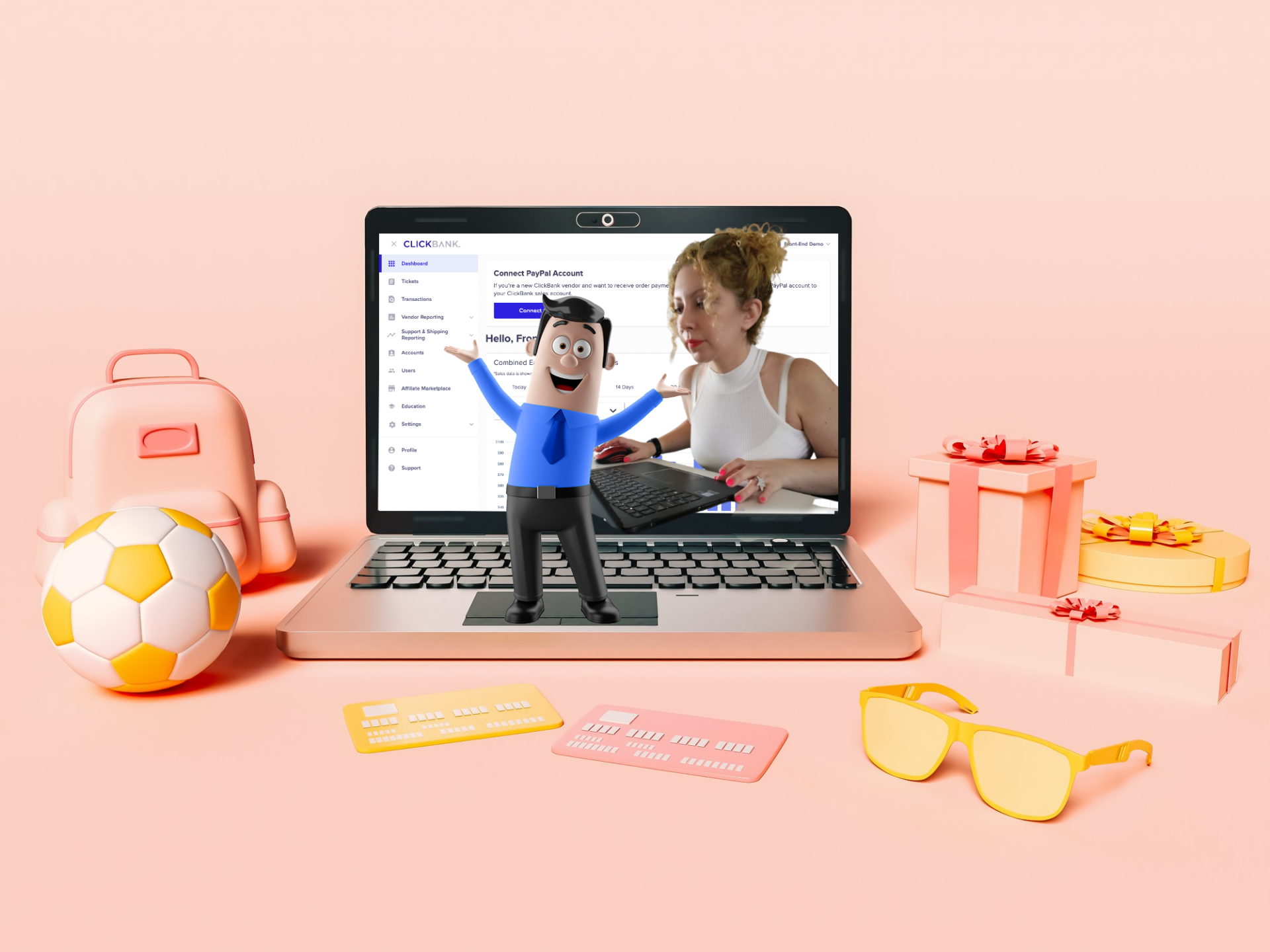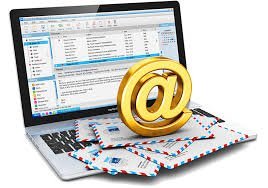Many Internet users know that mailing lists are one of the most affordable and effective advertising methods. Indeed. But not many are that this newsletter and how to use it. Therefore, it is often an effective weapon against the owner of ads…
Rule 1: Know Your Audience
Let’s start at square one. This might sound like an old record on repeat, but hey, we don’t make the rules. Well, technically we do – it’s the first golden rule, after all! Knowing your audience is essential in email marketing. If you’re sending emails to the wrong people, you might as well be shouting into the void.
Understanding your audience means studying demographics, knowing their interests, and figuring out when they are most likely to read emails. Some cool tools to understand your audience better include Google Analytics and Facebook Audience Insights. They might sound like technical mumbo-jumbo, but we promise they’re more fun than a barrel of monkeys once you get the hang of it!
Rule 2: Craft a Catchy Subject Line
Once you’ve got your audience nailed down tighter than a drum, it’s time to get them to open your emails. Enter Rule 2: Crafting a Catchy Subject Line. Your subject line is like the appetizer to a meal; it should be so tempting that your audience can’t wait for the main course.
Keep it short, punchy, and interesting. No spoilers, though! You don’t want to give away all the goodies in one go. If you need some inspiration, check out some of the best email subject lines on the internet. We swear they’re catchier than a hit pop song!
Rule 3: Personalize, Personalize, Personalize
We’re on to Rule 3, and it’s time to get personal. We don’t mean sharing your deepest, darkest secrets. No, we’re talking about email personalization. You want your audience to feel like you’re writing to them and only them. It’s the difference between being another face in the crowd and being the life of the party.
Use their name in the email, reference past purchases or interactions, and make the email relevant to them. This isn’t just us talking; studies have shown that personalized emails can increase transaction rates by up to six times!
Rule 4: Keep it Short and Sweet
Rule 4 is all about getting to the point. No one has the time (or the patience) to read a novel in their inbox. The KISS principle reigns supreme here – “Keep It Short and Sweet.”
Make sure your emails are concise, easy-to-read, and straight to the point. Break up the text into short paragraphs or bullet points, and make sure you have a clear call-to-action.
Rule 5: Don’t Forget the Call-to-Action
Speaking of call-to-action, it’s so important it’s earned itself Rule 5 on our list. Every email you send should have a purpose, and your call-to-action (CTA) is how you get your audience to fulfill that purpose. It could be to visit your website, check out a new product, or sign up for a webinar.
Whatever it is, make sure your CTA is clear, enticing, and easy to find. Some marketers even recommend including multiple CTAs in one email to increase click-through rates. We’re not mathematicians, but more CTAs equal more opportunities for clicks, right?
Rule 6: Be Consistent, but Don’t Spam
Our next rule is a delicate balance. Rule 6: Be Consistent, but Don’t Spam. You want to keep your brand at the top of your audience’s mind, but you don’t want to be the email equivalent of a pesky fly.
How often you should send emails depends on your audience and the content you’re sending. Some brands succeed with daily emails, while others prefer weekly or monthly. The key is to find the sweet spot where your audience is always excited to hear from you but doesn’t feel bombarded.
Rule 7: Test and Learn
Rule 7: Test and Learn is where you become an email scientist. You have your lab coat on and are ready to experiment. Try out different subject lines, email formats, send times, and more. Then, analyze the results to see what works and what doesn’t.
A/B testing is a particularly effective method here, allowing you to send two versions of an email to see which performs better. This rule is all about trial and error, so don’t be afraid to make mistakes – that’s how we learn!
Rule 8: Mobile-First Design
Did you know that over half of all emails are opened on mobile devices? That makes Rule 8: Mobile-First Design a crucial part of your email strategy. Make sure your emails look just as stunning on a small screen as they do on a big one.
This means using responsive design, keeping your layout simple, and making sure your CTA buttons are big enough for thumbs! Don’t forget to test your emails on multiple devices to ensure everyone gets the best experience.
Rule 9: Measure Success
You didn’t think we’d let you off the hook without some homework, did you? Rule 9: Measure Success is all about checking how well your emails are doing. Open rates, click-through rates, conversion rates – these are all your bread and butter when it comes to email analytics.
There are plenty of tools out there to help you, like Mailchimp’s email analytics or Google Analytics. These tools provide insightful data that can help you refine your email strategy.
Rule 10: Make it Valuable
We’ve saved the best for last. Rule 10: Make it Valuable. Every email you send should provide value to your audience, whether it’s educational content, an exclusive discount, or even just a good laugh. Remember, your audience is giving you their precious time – make sure it’s worth their while!
And with that, we’ve reached the end of our golden rules. But don’t fret; these are just the beginning. There’s a whole world of email marketing out there waiting for you to explore. Happy emailing!
Somewhere buy a ready base of email addresses that have something in the script or program to send – and here comes the SPAM instead of useful and literate mailings.
This article is about the most common mistakes that amateurs make. Here are the basic rules for the proper use of your mailings. Treat them as a capital truth of the science of mailing lists.
As always, to avoid “misunderstandings,” we will begin with the terms and definitions from the field of mailings. The main errors often occur because of a misunderstanding of these terms.
“Mailing List” – a way to mass deliver helpful information in the form of emails to subscribers who are themselves, by their own free will, signed up to receive periodic precisely this information.
“Subscriber” – is the owner of an electronic mailbox, which is subscribed to a specific mailing list to receive periodic information he is interested in. It is called the “Subscriber” because he himself is on this list and wants to get only interesting to him with information.
“Confirm subscription” – a process in which the subscriber immediately after the start of the subscription will be sent a special letter. There are several variants that confirm your subscription to make sure that it is not accidental and is not wrong.
Choices:
- * Supported by the reference;
- * Confirmation email;
- * Password to confirm the subscription.
An unconfirmed subscription is invalid and a mailing address is not made! Please note that the letter to confirm should not have any sense of advertising and does not affect the choice of the subscriber. The letter should include only: the name of the mailing of its author, subscriber data, subscription date, the technical power distribution can be instructions on how to confirm the subscription, as it is to stop and how to manage it.
“SPAM” – a mass mailing of e-mails with information of advertising or otherwise to the email-addresses, owners who have not given their consent to receive such information.
Your future subscriber himself must agree to your mailing list and subscribe to it only voluntarily. If he liked you personally, if he’d like a description of your mailing list, or if he is interested in marking your subject.
Therefore, “the mailing” can only be called such a mass mailing emails, in which there are:
* List of email-addresses, sformirovnny by voluntary subscription;
* Mandatory confirmation of subscription for the subscriber on the mailing list;
* Issues with a given frequency, all the relevant topics, to which initially asked to list subscribers;
* Detailed instructions in each issue of mailing to manage its receipt (evasion, delete) and manage subscriber data;
If a subscription does not meet these conditions, it can not be called “mailing” and can not be effective. Anyway, with such dispatch will be problems, (sometimes very serious), and its profitability will be very low if any such will.
Now turn to the rules, which is devoted to this article, the rules of competent and highly effective mailing list:
Rule number 1. Your subscriber must personally subscribe to your newsletter and, importantly, it confirmed the subscription. These actions leave enough traces in memory, so you do not be surprised the first letter of your mailing. You can not sign the rights to our newsletter – he can only do it by yourself! And it is CERTAIN newsletter, which you told him in advance. Confirm subscription he has to just own!
Rule number 2. The subscription can be LEGAL only if the email-address was in your list of subscribers through a subscription form, or through email-address mailing list, or through registration with the parallel subscription. Let me explain more:
* Subscription Form a special html-code c fields in which the future of the subscriber must enter the email and other data to begin the subscription process. This html code is usually are generated services, mailings, programs or scripts for mailing. Then you insert this code to your site;
* Email-address is the mailing of such electronic mailbox, any email which automatically starts the subscription process for reverse email-address;
* Registration with the parallel subscription is usually an additional checkbox (box to tick to select) at the bottom of the form to subscribe, which automatically signs yet registered to one or more mailings. Only then it should be noted that with such a subscription checkbox should be selected in advance (by default) and make sure there must be the name of the mailing with the description.
Rule number 3. The information in the newsletter should be focused on the needs of your subscribers in a useful and free information on the mailing. Of course, about their interests, too, should not be forgotten, but it should be done very delicately. Only in this case, you will be trusted.
Rule number 4. Mailing list – this is not advertising products and services. Yes, there may be advertising, but to send naked advertising to its subscribers – this is the shortest way to lose them and cause a wave of discontent. So give them 80% of useful and free material and not more than 20% of advertising (and unobtrusive and well done).
Rule number 5. Adhere to the stated frequency issues. Too cool down rare editions interested subscribers. Too often – do not leave time for the development of the proposed material. We must find a middle ground, which is suitable for you and your subscribers.
Rule number 6. In each issue indicate the name and mailing your personal data: name and surname of the author lists and details for the feedback. It is desirable to indicate the circulation, as well as the site distribution. Well, if there is its own page with a mailing to your site or your own website! In addition, should have access to the archive of past editions of your newsletter.
Rule number 7. Do not overload the production of materials! Each issue of let’s from 2 to 4 useful information materials. “Weight” issue along with attached files should not exceed 200 kb. The materials themselves do not overload the links to other sites. Try to have a subscriber has been as little as possible options for the transition. Focuses only on the subscriber’s right for you and useful for him actions.
Rule number 8. In each issue, make sure that a subscriber has full information and tools to manage subscriptions. Suppose that there are present recommendations as it may unsubscribe if she did not like.
Rule number 9. If the subscriber has subscribed to your mailing list, it does not mean that he agrees to receive and OTHER your mailing! If you have opened a new mailing list, you can unobtrusively otreklamirovat and invite and subscribe to it in the old mailing list. Or, just place the subscriber informed of presence you have other materials (mailings).
Rule number 10. Use only high-quality software. One of the most convenient and functional tools for conducting a mailing service smart email-autoresponders and mailing lists. Here you will find everything you need to reference lists, as well as full compliance with all the functions of network rules and regulations of voluntary email-marketing.
There! Now you know the main rules for effective management of mailing lists. If you faithfully follow them, you’ll get a high response to their suggestions, trust and respect of your subscribers and, ultimately, high returns. Just use these rules and quickly solve your problem!
Guest Post by Alexej Glibanov


![15 Best Affiliate Recruitment Software Tools [2025 Update] - 15 Best Affiliate Recruitment Software Tools [2025 Update] -](https://www.toptut.com/wp-content/uploads/2024/01/affiliate-recruitment-software-1.png)






